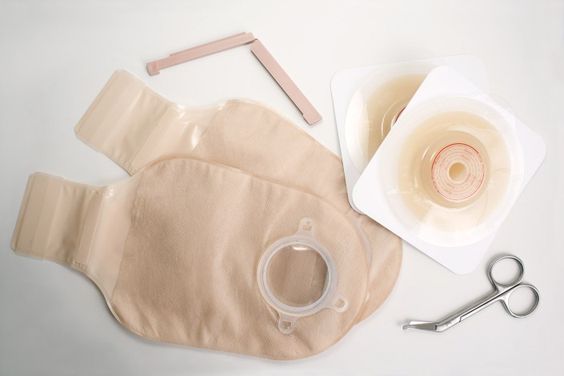As a special surgical method in the medical field, stoma has many types and each has its own characteristics. Let's take a look at the classification of stoma according to its purpose, function, and location.

Classification of stoma shape:
1. End stoma, also often called single-lumen stoma. This stoma has only one opening in the abdominal wall. Its formation process usually involves resection of the diseased intestinal segment, and then freeing the proximal intestine and pulling it out of the abdominal wall. In this process, the intestinal mucosa is turned outward and sutured to the abdominal wall, while the distal intestine is mostly removed or sealed in the abdominal cavity. End stomas are mostly permanent, among which colon end stomas are mainly used to treat rectal cancer, anal malignancies, and irreparable rectal and anal injuries. Ileal end stomas are often used to treat infectious enteritis, familial polyposis, and colorectal cancer.
2. Loop stoma, also known as double-lumen stoma. The formation of this stoma requires a section of the intestine to be pulled out of the surface of the abdominal wall and a support rod or support frame is used to prevent it from retracting into the abdominal cavity. The support frame is usually removed in about 10-14 days. Subsequently, the intestinal wall is cut longitudinally, and the mucosa is everted to form two openings, which are fixed to the abdominal wall by layered sutures. In this stoma, the proximal end is called the functional loop, which can discharge feces, and the distal end is called the non-functional loop.
Classification of stoma function time:
Stomas are mainly divided into two categories: temporary stomas and permanent stomas. Temporary stomas are mainly used to temporarily discharge intestinal contents from the body, allowing the downstream or distal intestine to rest and heal. This type of stoma is common in ileostomy, and the retention time is generally about three months. Permanent stomas are mostly used in rectal and full or partial colectomy. At this time, the continuity of the intestine cannot be restored, and stomas become an important way to replace the intestine to discharge contents.
From the functional perspective :
Stomas can be divided into three types: input, diversion, and output. Input stomas allow nutrients to enter the gastrointestinal tract directly through the stoma. They are mostly temporary settings and are suitable for patients who cannot take nutrients orally due to esophageal obstruction and other reasons. Diversion stomas transfer the contents of the gastrointestinal tract to the outside of the body to avoid passing through the lesion, thereby reducing the potential impact on the lesion. Output stomas are mainly used to remove waste from the body and provide an outlet for excretion. Most intestinal stomas used to excrete feces belong to this category.

By part angle :
Stomas mainly include colostomy, ileostomy, and urostomy. A colostomy is usually opened on the left side of the abdomen, with a circular or oval shape, protruding a certain distance from the surface of the belly. An ileostomy is usually set up because the large intestine is removed or cannot be connected, or there is a lesion at the end of the small intestine. It is usually located in the right lower abdomen, and the excrement is liquid. Urostomy is suitable for situations where normal urination cannot be caused by bladder or urinary system lesions. Usually, a stoma is made by freeing a section of the ileum or directly using a ureter to achieve urination function.
Whether it is an end stoma or a loop stoma, it is selected according to the patient's specific condition and needs, aiming to maximize the patient's quality of life and reduce the occurrence of complications. For more information on Innomed®Ostomy Pouch, refer to the previous articles. If you have customized needs, you are welcome to contact us; we will serve you wholeheartedly.
At Longterm Medical, we transform this data by innovating and developing products that make life easier for those who need loving care.
Editor: kiki Jia

 English
English عربى
عربى Español
Español русский
русский 中文简体
中文简体








